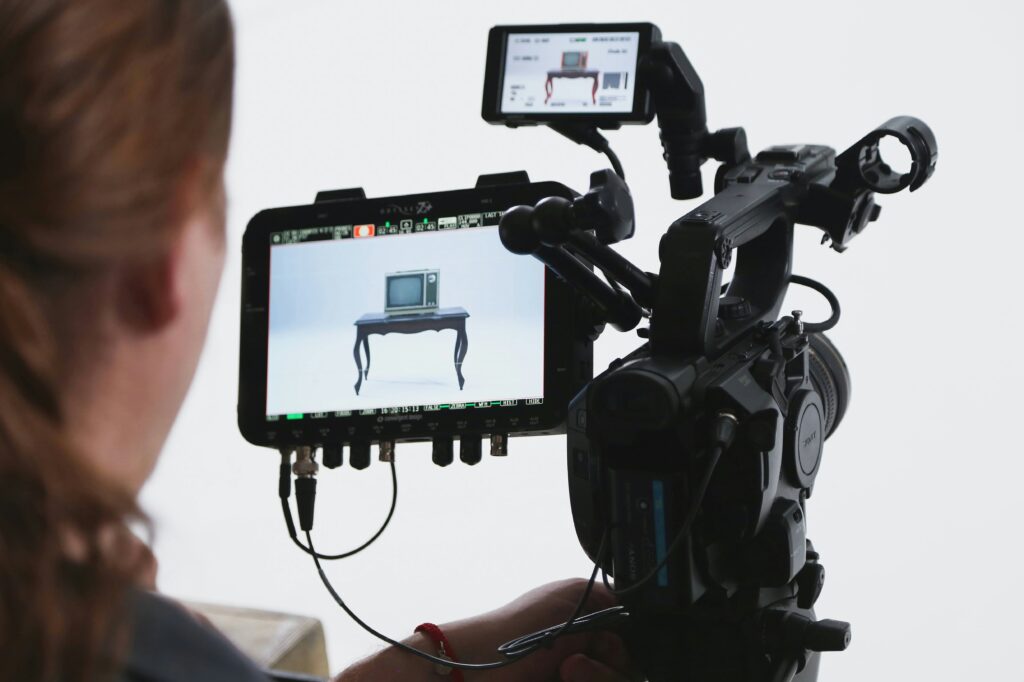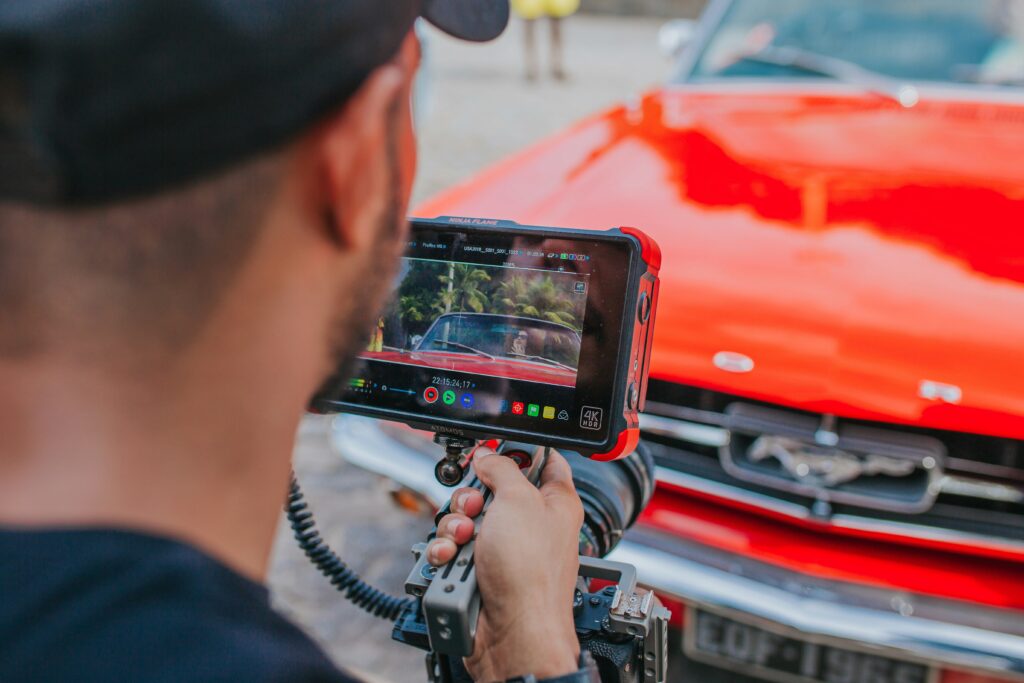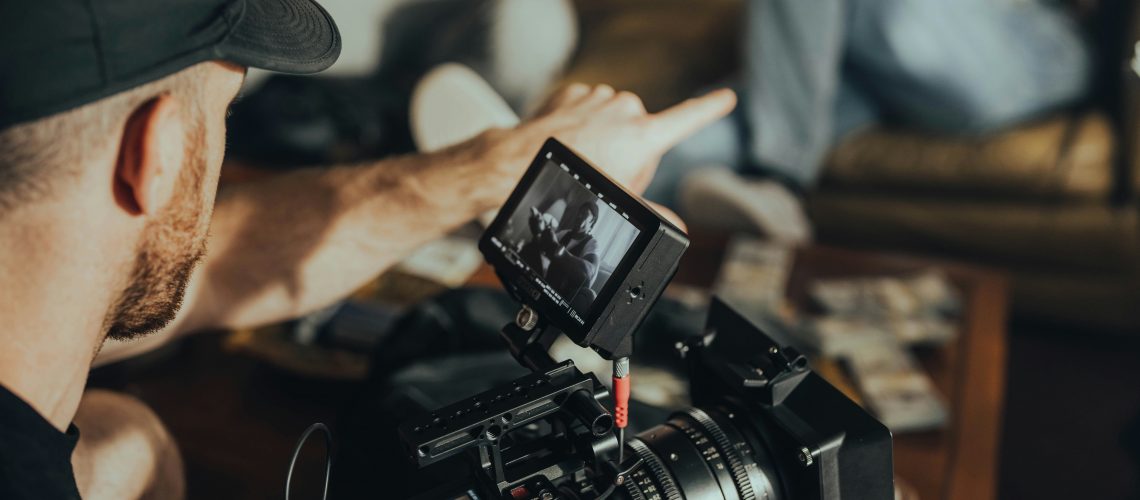In production companies in Las Vegas, creating engaging content requires more than just equipment—it demands technical and creative mastery. From mastering camera moves to effective lighting, every detail shapes the final product. This blog explores insider secrets and expert techniques that elevate your Las Vegas video productions to professional standards. Partnering with a top video production company Las Vegas can help you refine your skills and achieve exceptional results in film production Las Vegas.
Understanding Camera Moves

Common Types of Cameras Moves
Camera movement is one of the most dynamic tools in video production, capable of adding depth, context, and emotion to your footage. Here are some common types of cameras moves:
Pans: Horizontal movement from left to right or right to left. Pans can reveal new information or follow a subject, guiding the viewer’s attention across the scene.
Tilts: Vertical movement up or down. Tilts can emphasize height or depth, creating a sense of scale or focusing attention on a specific subject.
Zooms: Changing the focal length of the lens to bring the subject closer (zoom in) or move it further away (zoom out). Zooms can highlight details or provide a broader context.
Tracking Shots: Moving the camera along with the subject, often on a dolly or gimbal. Tracking shots create a sense of movement and immersion, making the audience feel like they are part of the action.
Adding Depth and Visual Interest
Each type of camera move can significantly enhance the visual storytelling of a video. For instance, a slow pan can introduce a serene landscape, while a rapid zoom might convey urgency or surprise. By understanding and strategically applying these moves, filmmakers can add layers of meaning and engagement to their content.
Importance of Camera Movement
Impact on Storytelling and Audience Engagement
Camera movement isn’t just about aesthetics; it’s a powerful storytelling tool. The way a camera moves can influence the viewer’s emotional response and engagement. For example, a smooth, steady tracking shot can create a sense of calm and continuity, while shaky handheld movements can convey chaos or tension.
Evoking Emotions and Enhancing Production Value
Different camera moves can evoke various emotions. A slow zoom in can create intimacy or suspense, while a sweeping pan can induce awe or wonder. Effective use of camera movements can elevate the overall production value, making the video more captivating and memorable.
Key Elements of Effective Communication
Role of Lighting, Framing, and Composition
Effective communication in video production involves more than dialogue and script. Lighting, framing, and composition are crucial in conveying the intended message and creating a cohesive visual narrative.
Lighting: Proper lighting sets the mood, highlights important subjects, and guides the viewer’s focus. It can dramatically alter the perception of a scene.
Framing: The way subjects are positioned within the frame affects how they are perceived. Different framing techniques can suggest relationships, hierarchies, or themes.
Composition: Composition rules like the rule of thirds, leading lines, and symmetry ensure that the visual elements of a scene are well-organized and pleasing to the eye.
Creating a Cohesive Visual Narrative
By thoughtfully combining lighting, framing, and composition, filmmakers can create a visual narrative that enhances the story and keeps the audience engaged. These elements work together to support the emotional and thematic undertones of the video.
Lighting Techniques for Video Production
Importance of Proper Lighting
Lighting is a fundamental aspect of video production that directly influences the mood and tone of a video. Proper lighting can enhance the clarity, depth, and quality of the footage, making it more visually appealing.
Insider Tips for Effective Lighting
Natural Light: Utilize natural light whenever possible. Golden hours (shortly after sunrise and before sunset) provide soft, warm lighting that is ideal for shooting.
Artificial Light: Use artificial lighting to control and shape the light in your scene. Tools like softboxes, LED panels, and reflectors can help create the desired lighting effect.
Color Temperature: Adjust the color temperature to match the mood of the scene. Cooler temperatures (blue hues) can create a somber or professional atmosphere, while warmer temperatures (orange hues) can evoke warmth and intimacy.
Framing and Composition

Significance of Framing and Composition
Framing and composition are essential for creating visually engaging videos. They determine how the elements within the frame are arranged and perceived by the audience.
Framing Techniques
Rule of Thirds: Dividing the frame into thirds, both horizontally and vertically, and placing key elements along these lines or at their intersections can create balanced and visually interesting compositions.
Leading Lines: Use natural or artificial lines within the scene to guide the viewer’s eye toward the main subject or point of interest.
Symmetry: Symmetrical compositions can convey a sense of harmony and order, while asymmetrical compositions can create tension or dynamic interest.
Audio Considerations in Video Production
Importance of High-Quality Audio
High-quality audio is crucial for a professional video production. Poor audio can detract from the visual quality and overall impact of the video, making it less engaging and harder to follow.
Expert Tips for Capturing Clear Sound
Microphones: Use external microphones, such as lavaliers, shotgun mics, or boom mics, to capture clear and focused sound.
Reducing Background Noise: Minimize background noise by choosing quiet locations and using soundproofing techniques. In post-production, use noise reduction tools to clean up the audio.
Music and Sound Effects: Incorporate music and sound effects to enhance the emotional and narrative impact of the video. Ensure they complement the visuals and do not overpower dialogue or important sounds.
Editing Techniques for Seamless Video Production
Role of Editing in Refining Content
Editing is the final step in the video production process where all elements come together to create a polished and cohesive final product. It involves cutting, arranging, and enhancing footage to achieve the desired flow and impact.
Insights on Effective Editing
Cutting: Use precise cuts to maintain continuity and pacing. Match cuts, jump cuts, and cross-cuts can add variety and interest to the narrative.
Transitions: Employ transitions, such as fades, dissolves, and wipes, to smoothly shift between scenes and maintain the viewer’s engagement.
Color Grading: Adjust colors to create a consistent and appealing visual style. Color grading can also be used to convey different moods or highlight specific elements.
Audio Mixing: Balance dialogue, music, and sound effects to ensure clear and impactful audio. Use audio transitions to smooth out changes in sound levels and maintain a seamless audio experience.
Collaborating with a Team

Importance of Teamwork and Collaboration
Flawless video production is often the result of effective teamwork and collaboration. Each team member brings unique skills and perspectives that contribute to the project’s success.
Tips for Effective Team Collaboration
Communication: Maintain open and clear communication among team members. Use project management tools and regular meetings to ensure everyone is on the same page.
Delegation: Assign tasks based on each team member’s strengths and expertise. Trusting team members with specific responsibilities can improve efficiency and quality.
Coordination: Coordinate schedules and workflows to ensure smooth transitions between different stages of production. Effective coordination minimizes delays and reduces the risk of errors.
Overcoming Common Challenges in Video Production
Addressing Common Obstacles
Video production often involves various challenges, from technical issues to creative blocks. Anticipating and addressing these obstacles is key to a successful project.
Solutions and Strategies
Technical Issues: Regularly check and maintain equipment to prevent malfunctions. Have backup equipment on hand in case of emergencies.
Creative Blocks: Foster a creative environment by encouraging brainstorming sessions and collaboration. Take breaks and seek inspiration from other works to overcome creative fatigue.
Time Constraints: Plan and schedule the production process meticulously. Allocate sufficient time for each stage and be prepared to make adjustments if needed.
Conclusion
Mastering video production Las Vegas requires understanding techniques like camera moves, lighting, audio, and editing for flawless results. By applying expert methods, your video projects will reach professional standards. Collaboration and communication are as vital as technical skills for production companies Las Vegas to deliver top-tier content. Embrace these strategies, and watch your video production in Las Vegas improve dramatically.
To book our services, kindly send us an email at Art@HUSTLMedia.com or directly call us at (702) 980 -9620. You may also learn more about us and our campaigns by visiting our website – HUSTL Media.




